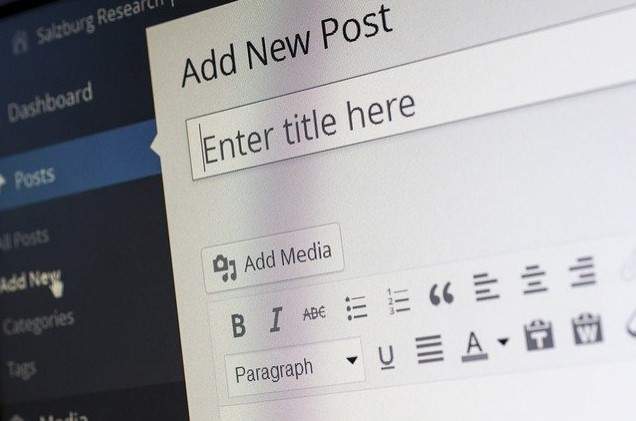There are a lot of people who want to publish a book. Unfortunately, many don’t know where to start. The process of publishing a book is often daunting, with many steps and phases that need to be completed in the correct order for things to run smoothly. This article will outline those steps so that would-be publishers can have a better understanding of what they need to do to get their work out into the world.
Make sure to use the proper language
As distant as this may seem, it is extremely important to know who your target audience is and try to fine-tune your language accordingly. People from the USA, UK, and Australia all speak English, but, depending on the type of literature, all of them prefer to read in their slang, especially if there is any informal language used. Adjusting some colloquial phrases can help your readers connect with the story easily, which is why you should consider editing the text accordingly. Using proofreading services in Australia, for example, is great to adjust some phrases to their local language (unless the paper is written in any formal or academic manner). Also, by reaching out to a local proofreader, you can ask them for their connections or make an arrangement to promote the material (especially if you will credit them publicly for their services). Both of you can benefit from such an agreement, so make sure to communicate the scope of the project and conditions in its entirety.
Create a catchy and attention-grabbing title
The title of your book is the first thing people see, so it has to be good. It has to make them curious, make them want to read more, and make them decide that your book is worth their time. If you can manage to do all of those things with your title, then you’re on the right track. However, if you’re having trouble coming up with a good one, don’t worry – there are many tools and services out there that can help you come up with a great title. Just make sure that it’s related to the content of your book and not something completely different.
Set a budget and stick to it
Publishing a book can be expensive, especially if you’re doing it yourself. That’s why it’s important to set a budget and stick to it. This will help you avoid going into debt and will keep your expenses under control. Make sure to include the cost of marketing and publishing in your budget, as well as the cost of any professional help you may need.
In case you are unable to decide on the best course of publishing for your book, it might be a good idea to do some research beforehand. Call out some publishing companies and ask them about their pricing services. Now, many companies offer full packages, from editing to design and printing, and each of these segments has cheaper and more expensive options. After the initial consultation, you can segment each of these steps and look up how much each service would cost individually and if it is outsourced. Write down every option you have available and do the overall cost for all options. The one that is closer to the original budget you intended is the one to go.
Plan out your marketing strategy
No matter how good your book is, if no one knows about it, then it’s not going to sell. You need to have a solid marketing strategy in place before you publish your book, and you need to stick to it. There are many ways to market a book, from online ads to PR stunts, and you should choose the ones that will work best for you. Make sure to allocate enough time and money for marketing – it’s an important part of the publishing process and should not be underestimated.
Get professional help
Publishing a book is a big undertaking and many things can go wrong if you’re not careful. That’s why it’s often a good idea to get professional help – from editors to designers. Many people can help you make your book the best it can be, and you should take advantage of their services. Not only will it make your book look better, but it will also help you avoid any mistakes that could potentially ruin your publication.
Choose the most fitting format
Not all books are the same and not all formats are suitable for all types of books. That’s why it’s important to choose the right format for your book. If you’re not sure which one is right for you, then ask a publishing company for advice. They will be able to tell you which format is best suited for your type of book, and they will also be able to help you with the design and layout.
E-book or paperback?
When it comes to formats, one of the most important decisions you have to make is whether to publish your book as an e-book or a paperback. There are pros and cons to both options, and you should choose the one that is best suited for your book.
-
E-book publishing
This format is becoming more and more popular, especially among self-publishers. It is because it’s cheaper and easier to publish an e-book than a paperback. It’s also easier to distribute, and you can reach a larger audience. However, many people still prefer to read paperbacks as they love to hold the book in their hands and enjoy reading.
-
Paperback publishing
As an option, it is more expensive but it has many advantages over e-books. For one, people are more likely to buy a paperback than an e-book. They also look better and have a higher perceived value. Paperbacks are also easier to sell in bookstores and you don’t need a special device to read them.
Make a good first impression
The cover of your book is its first impression and it needs to be good. It should be eye-catching and it makes people want to read more. If you’re not sure how to create a good cover, then get professional help. Many designers specialize in book covers and they can create a design that will help your book stand out from the rest.

Publishing a book can be a daunting task, but if you follow these tips, you’ll be well on your way to having a successful publication. Make sure to plan out your marketing strategy and get professional help along the way. Choosing the right format is also important, so make sure to consult with a publishing company before you make any decisions. And lastly, don’t forget about the cover – it’s the first thing people will see and it needs to be good.














